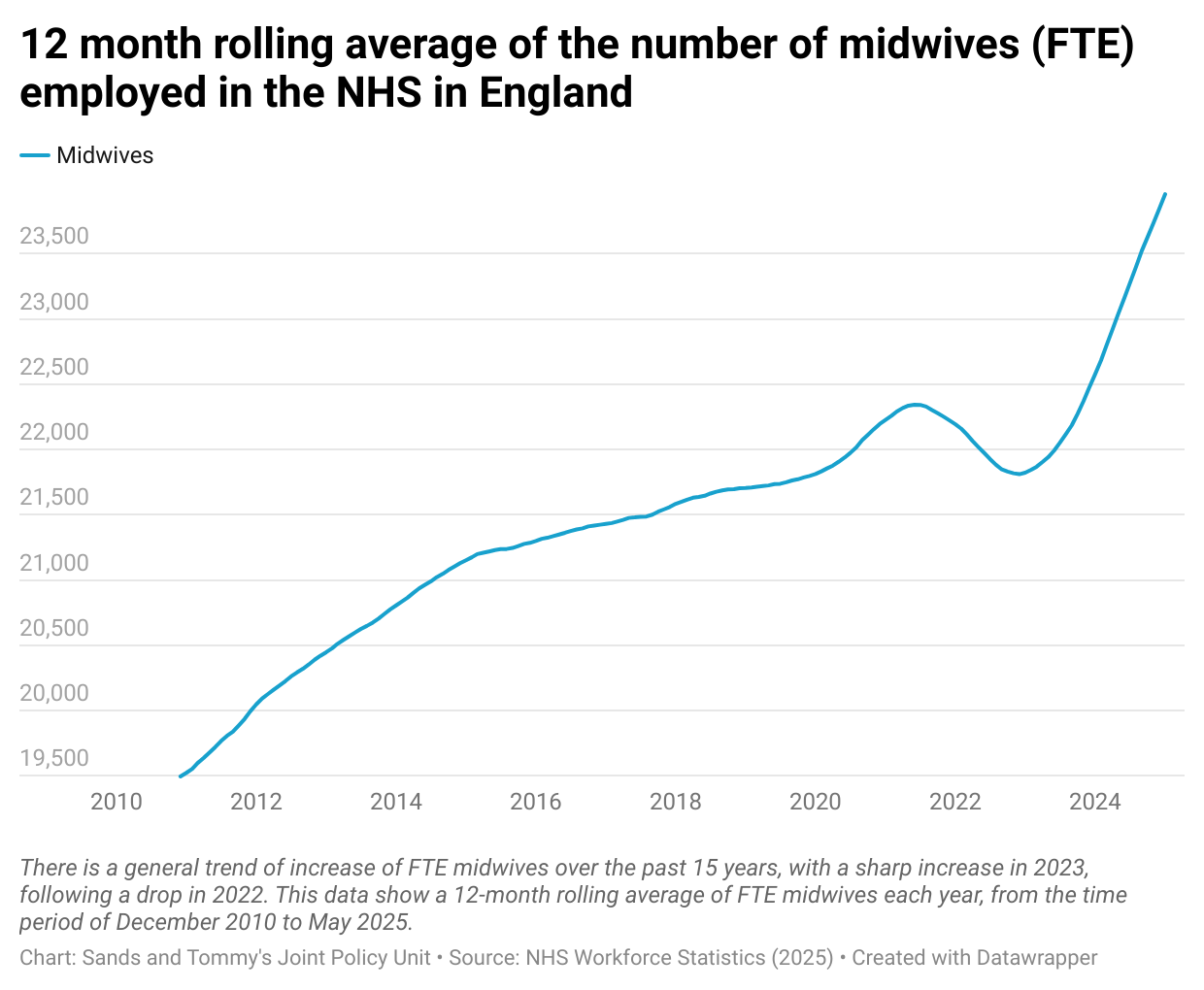Featured Chart: What’s happening with midwife numbers in England?
This is the first edition of our “featured chart”, where we take a closer look at some of the insights of our data hub. We are starting with a look at data on the number of midwives in England, an issue that is frequently cited in discussions about the safety of maternity services.
The chart illustrates a sharp and sustained rise in the number of full-time equivalent (FTE) midwives in England as recorded by NHS Workforce Statistics, highlighting a 10.3% increase from March 2023 to October 2024. February 2025 shows the highest level of FTE midwives on record at 24,991.
For context, back in 2023 the Royal College of Midwives said that the NHS in England was short of 2,500 midwives. This was based on data from December 2022, where there were 22,108 FTE midwives working in the NHS in England. By December 2024 that had increased to 24,657 – an increase of 2549 midwives, meaning this shortage has now been surpassed.
Numbers alone don’t tell the whole story. They don’t capture the skill mix and experience of midwives, and it has been suggested that midwives are providing over 100,000 hours of unpaid overtime each week.
From our recent call for evidence on the safety of maternity services, it is clear that current discussions on the maternity workforce need to move away from a binary debate around numbers of staff, to first build consensus on what safe care looks like, and the workforce needed to deliver it.
The Sands and Tommy’s Joint Policy Unit is currently undertaking more detailed work to look at capacity and drivers of demand in maternity services in England.
Links:
Interactive featured chart on our data hub


